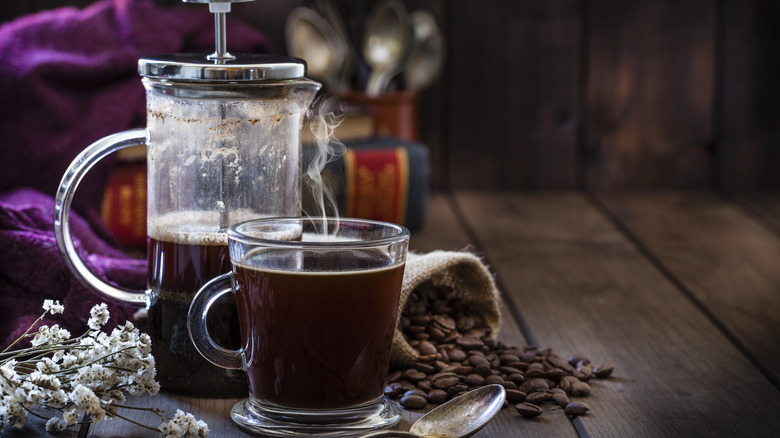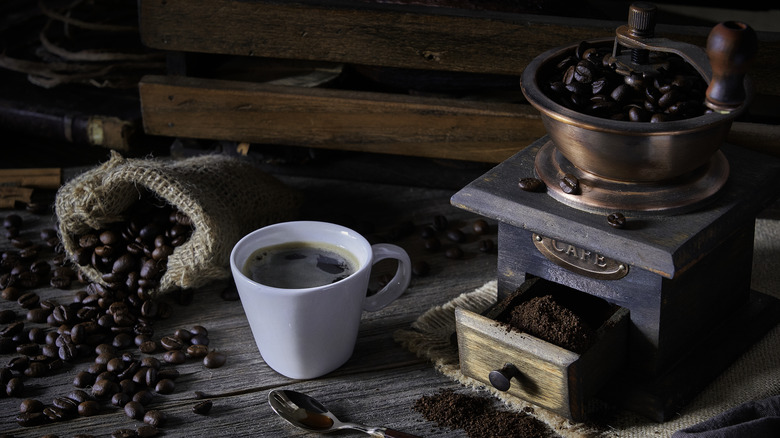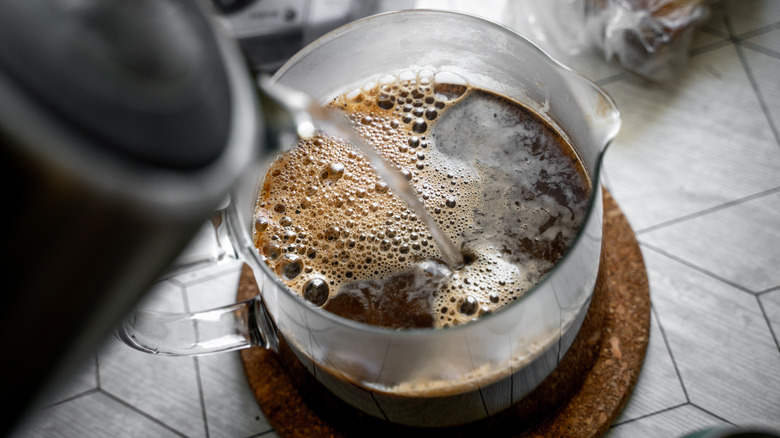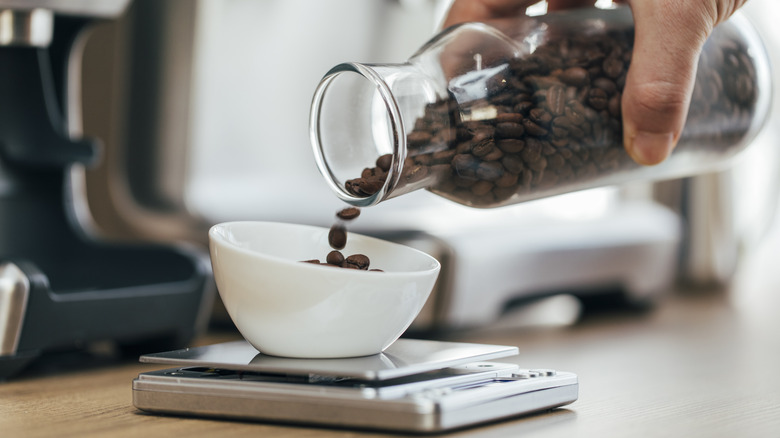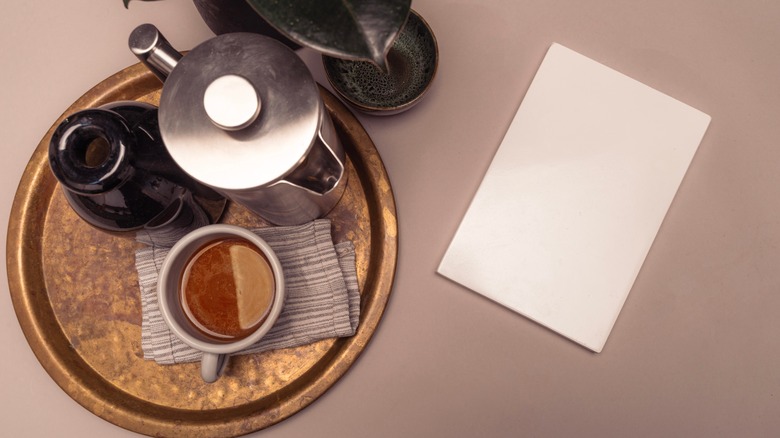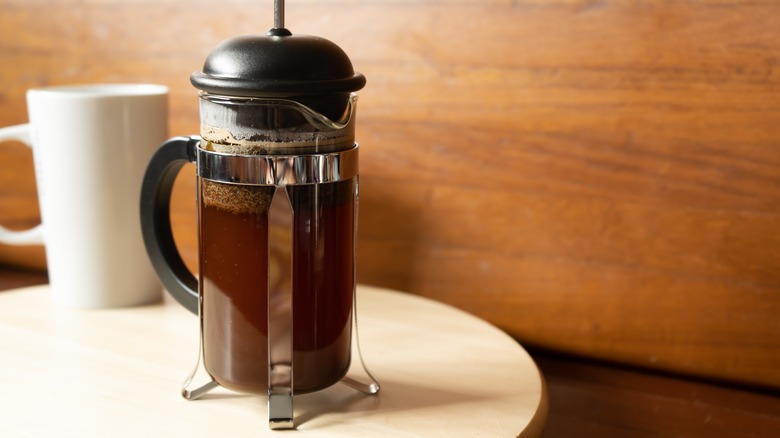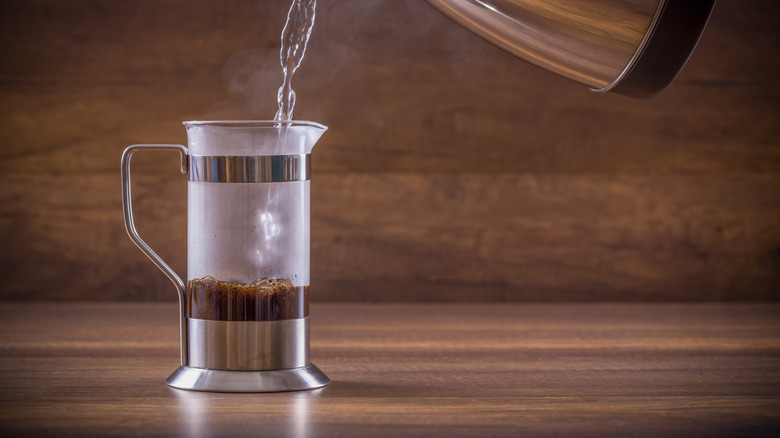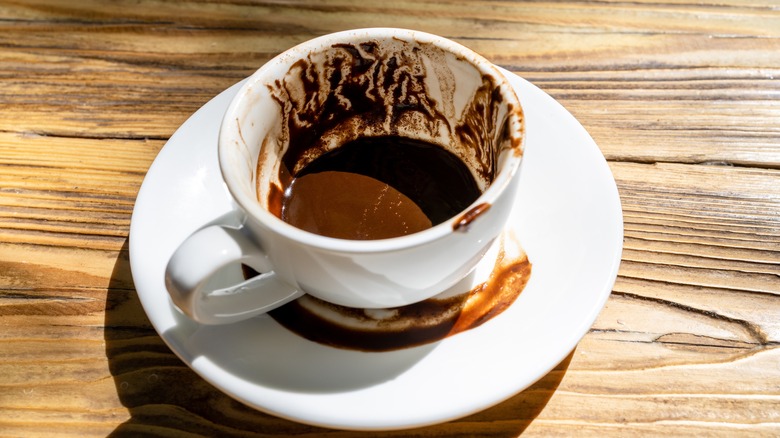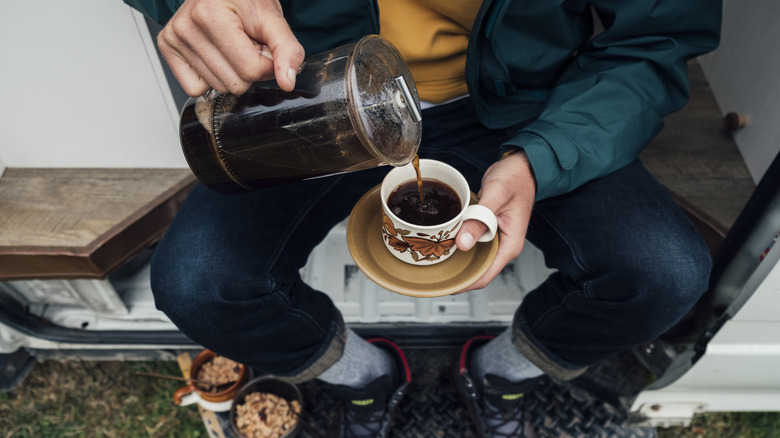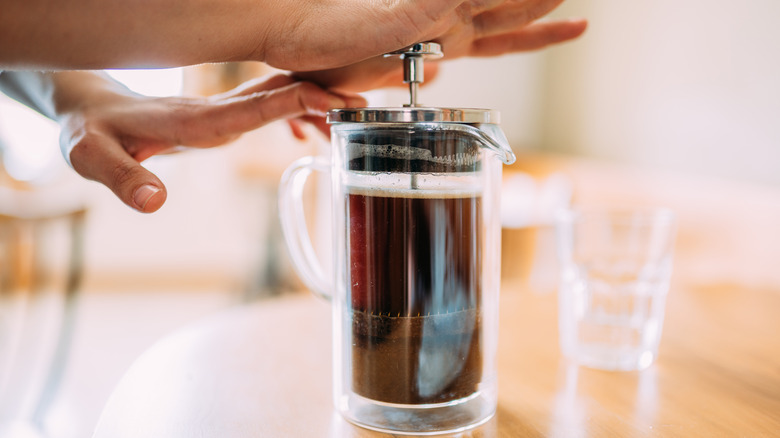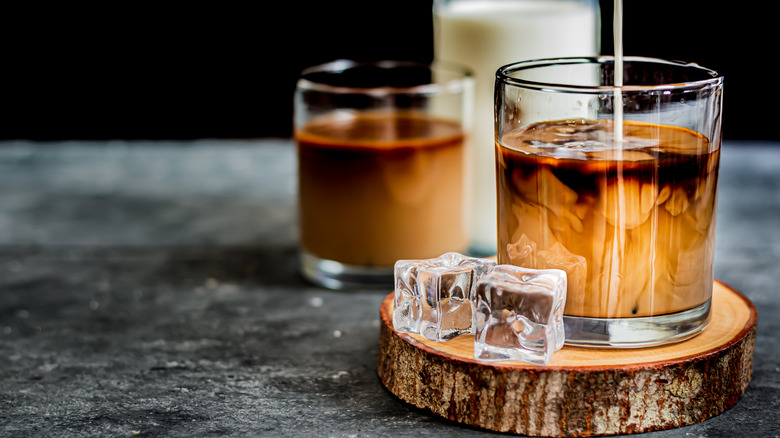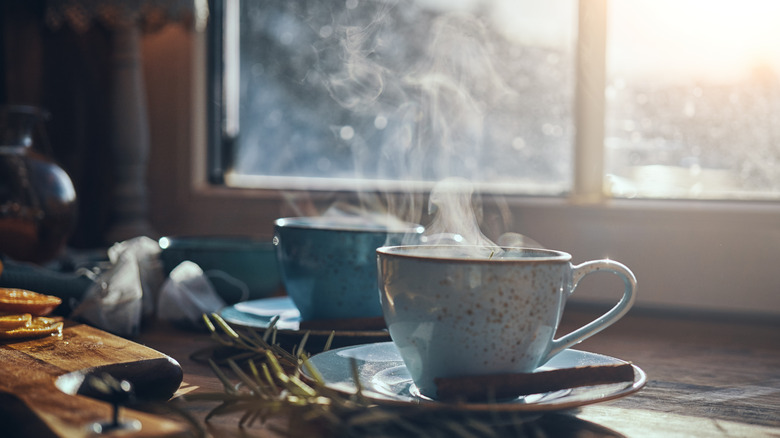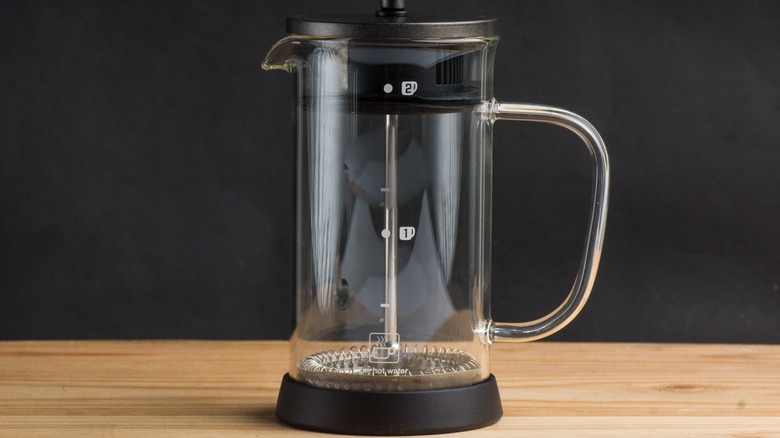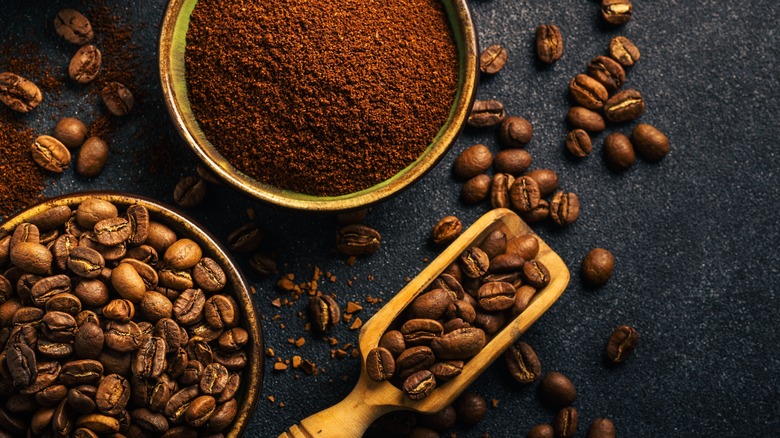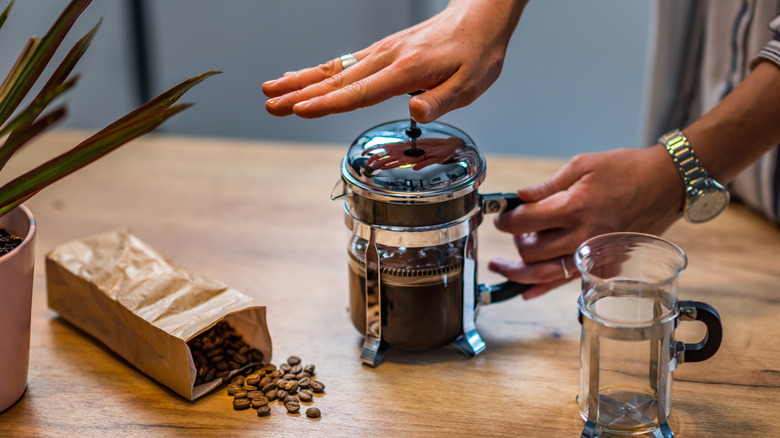Mistakes Everyone Makes When Using A French Press
If you're anything like us, there's nothing quite like starting your day with a rich, flavorful cup of French press coffee. But let's be real — mastering the art of the French press isn't as easy as it looks. We've all been there, scooping in the coffee grounds, pouring in the water, and eagerly awaiting that perfect brew, only to be met with a mediocre cup.
In this article, we will dive into the common blunders many of us make when using a French press. Don't worry; we've all made these mistakes at some point, so there's no need to feel like you're alone in the coffee struggle. We'll look at a range of factors, including the grind size, water temperature, and coffee-to-water ratio. Problems with these are all classic errors that can seriously impact your coffee game.
But there's more to consider, including whether or not to stir, if you should skim the surface of your coffee before plunging, and whether the beans themselves are the right choice. So, if you're tired of settling for subpar French press coffee, join us as we unravel the common mistakes and unveil the secrets to achieving coffee perfection. Let's turn those brewing blunders into a thing of the past and elevate your French press game.
Not grinding the beans to the right size
First, we need to discuss grind size, which can be the hero or villain of your French press journey. Get the grind size wrong, and you're left with a subpar coffee that you'll have to grimace your way through. Using the wrong grind size can either lead to an over-extracted, bitter brew or an underwhelming, weak cup.
If you're rocking a grind that's too fine, you won't like the results. The main problem is with over-extraction. Because ground coffee gets more time up close and personal with the water compared to drip, pour-over, or espresso methods, it can easily be over-extracted. Not the vibe you're going for, right? This means you end up with excessively strong coffee that tastes unpleasantly bitter. The overly fine particles can also slip through the mesh filter of your French press, leaving you with a cup that resembles a muddy puddle.
On the flip side, going too coarse has its own set of problems. Large coffee grounds might not release enough flavor during the brewing process, leaving you with a cup that lacks that robust, full-bodied taste we all crave from a French press. You need to find a balance between the two. Aim for a coarse grind resembling breadcrumbs -– not too chunky, not too fine. If in doubt, err on the side of caution and start with the coarsest grind possible, then adjust it finer next time if you think you need to.
Using water that's the wrong temperature
Water temperature can make or break your French press experience. You've got your coffee grounds all set, you're ready to hit the brewing stage, and then, oops -– the water temperature is not on point. It's a subtle detail, but it makes all the difference. Getting the water temperature just right for your French press coffee is important. If it's too hot, you risk scalding your precious coffee, leaving it with a burnt taste that's anything but enjoyable. Too cool, and you're looking at an under-extracted cup that's weak and watery.
The ideal water temperature is around 195 to 200 degrees Fahrenheit. Why? This range ensures that the coffee grounds release their flavors and aromas at an optimal pace. When the water is in this Goldilocks temperature range, it allows for a balanced extraction, giving you a cup that's rich, full-bodied, and bursting with those delightful coffee notes we all crave. For the most precise results, use a thermometer to take the temperature of the water. But, let's face it, you're probably not going to do this every time. So, just let the water sit for a minute or two after boiling, and it should be cooled to the optimum temperature.
Not weighing coffee
If you want to make the perfect French press coffee, you should be weighing rather than measuring. We've all tried eyeballing those scoops, thinking we've nailed the perfect ratio. But truth be told, measuring by volume is like playing a coffee guessing game, and who wants to leave their morning brew up to chance? Instead, you should use a kitchen scale. Why? Because coffee beans' densities can vary, and the volume they occupy is a wild card. Using a scale ensures you're not just throwing in coffee willy-nilly but crafting a cup with intention.
Now, what's the golden ratio, you ask? Start with a ratio of around 1:15 or 1:16 — that's one part coffee to 15 or 16 parts water. In terms of weight, that means using 1 gram of coffee for every 15 or 16 grams of water you use. But coffee is personal, and experimenting with ratios lets you tailor your brew to your taste buds. A ratio of 1:17 or 1:18 might be better if you like a milder brew, while those who like their coffee extra punchy might go as strong as 1:10 or 1:12.
Not warming the press
Here's a mistake that often gets overlooked in the French press playbook: not warming your press. Warming your French press with hot water before diving into the brewing process is like giving your coffee the warm embrace it deserves. If your press is as chilly as a winter morning, it can zap the heat from your water, leading to inconsistent extraction and leaving you with a cup that's more lukewarm than lava.
By preheating your French press, you're maintaining a stable temperature environment for the brewing magic to unfold. That means no sudden temperature drops and no weak or watery results. Take a minute to warm up that French press, and you're sure to be pleased with the results. All you need to do is add an inch or two of boiling or recently boiled hot water to your press while you go about your other coffee-making tasks, like weighing and grinding your beans. Then, put your hands around the press to check that it's warmed. Once it is, tip out the water and brew as normal.
Steeping coffee for the wrong amount of time
Another frequent mistake is steeping your coffee for either too long or — more commonly — not long enough. Leave it to steep for too long, and your coffee will be overly strong with bitter notes. Not long enough, and it will be weak with a watery flavor. Now, the common wisdom is to stick to around 4 minutes of steeping time, and sure, that can give you a decent cup. But allow us to let you in on a little secret — the real magic often happens in the sweet spot of 6 to 8 minutes. Giving those grounds a bit more time to brew can result in a fuller, more nuanced flavor profile.
But don't just take our word for it. If you've been unsatisfied with your French press coffee, experiment with your steeping time, and tweak it to your liking. Coffee preferences are as personal as fingerprints, so find what works for you. Whether you stick to 4 or 5 minutes or venture into the 6- to 8-minute territory, the key is to let your palate be the guide.
Not stirring the coffee before plunging
To stir or not to stir? It's a question that has sparked many heated conversations among coffee enthusiasts, and opinions are as varied as the beans in your grinder. Now, some purists argue that stirring disrupts the extraction process between water and coffee grounds, while others swear that a good stir ensures an even extraction.
So, what's the right choice? Well, the folks at Barista Hustle decided to settle this brewing battle once and for all. They rolled up their sleeves, put on their lab coats, and conducted some serious coffee experiments. What did they find? Brace yourselves -– a well-timed stir around the 5-minute mark into the steeping process produced the most even extraction and downright tasty results.
There you have it: a nugget of wisdom from the coffee scientists. Stirring isn't sacrilege; it's an art. Done at the right moment, it can make your French press coffee shine. Here's to stirring up some controversy in your coffee routine.
Not skimming the surface to reduce sediment
For those among us who've had enough of sludgy French press coffee or just can't stand even a hint of sediment in their cup, we have a solution. All you need to do is skim the grounds off the top of the brewed coffee in the press before plunging. It's a move that's pure genius for anyone who wants to enjoy the rich flavors of a French press brew without the unwanted grit.
How you do it is simple. After the coffee has steeped, instead of plunging straight down, gently skim off the top layer of grounds with a couple of spoons. Only spend around 15 to 30 seconds doing this, as your coffee will still be steeping and getting stronger as you skim. You won't get all the grounds out of your coffee before plunging, but even removing some of them will greatly reduce the amount of sediment in your cup. So, say goodbye to sludgy coffee and say hello to a cleaner, more refined cup of French press goodness.
Letting coffee sit after extraction
If you're letting your coffee sit after you've plunged it and it's brewed to your liking, you're unwittingly sabotaging your coffee break. French press coffee doesn't believe in downtime. Even after the plunge, the extraction party keeps going. If you let your coffee sit in the press, it'll keep getting stronger by the second. Your once perfectly balanced brew transforms into a stronger, more intense concoction, and not necessarily in a pleasant manner.
Once you've nailed the steeping time, perfected the grind, and plunged into coffee bliss, there's one more step that can make or break your brew: pouring off all your coffee at once. This allows you to halt the extraction process, preserving the flavors you worked so hard to coax from those coffee grounds. Leaving it in the press is like giving the grounds a green light to continue their flavor release, and you might end up with a cup that's stronger than intended.
Timing is everything in the French press game, and pouring off your coffee promptly ensures you enjoy the optimal strength and flavor profile you've crafted. Think of it like a chef serving a dish right when it's reached perfection — timing matters. Now, don't get us wrong, sipping a cup of French press coffee is a moment to savor, but letting it linger in the press isn't the way to do it.
Plunging too quickly or vigorously
Your coffee's brewed, and it's time to plunge to separate out the grounds. But, plunging too quickly or with too much vigor can lead to a coffee catastrophe. As you approach the plunge, consider this a delicate ballet, not a wrestling match. Plunging too quickly or forcefully can disrupt the finesse you've carefully cultivated throughout the brewing process.
Why does speed matter? Well, plunging too quickly creates turbulence in the press, sending those coffee grounds into a frenzy. Most of the pleasant flavor notes from your coffee grounds should already be extracted by the time you plunge. So, if you agitate those grounds too much at this point, you'll be coaxing them to release their bitter, astringent, and otherwise unpleasant notes.
The secret lies in the slow, gentle, even plunge. Think of it as guiding the coffee, not forcing it. This gradual descent allows for a controlled extraction, ensuring that the flavors meld together smoothly. Feel for any resistance while you plunge, and if it starts to feel tight, lift the plunger back up an inch or two and resume. Once you get to the bottom, don't squeeze the plunger into the grounds overly firmly. Again, this will release those unpleasant flavors you want to keep locked away in the grounds.
Not using a French press for cold brew coffee
Not making the most of your French press by using it to craft cold brew coffee? Then you're missing out. Your trusty French press isn't just for hot coffee; it's versatile enough to make cold brew, too. Making cold brew in a French press is a breeze, and the result is a smooth, low-acid, and refreshingly cold coffee concoction that's perfect for the summer months.
You make cold brew coffee in a French press in a similar way to hot coffee — it's just the coffee-to-water ratio and the steeping time that's different. First off, you coarsely grind your favorite coffee beans and mix them with water in your French press at a ratio of around 1:6 coffee to water. Give it a gentle stir to ensure all the grounds are thoroughly soaked, and then let the French press hang out in your fridge for about 24 hours. The extended steeping time extracts the coffee goodness without the heat, resulting in a rich and mellow brew.
Once the steeping is complete, press down the plunger gently. Now, here's where your patience pays off — pour the cold brew elixir into a glass filled with ice, and voilà, you've just transformed your French press into a cold brew maker.
Not using a French press for tea
There's another alternative use for French presses that you're making a mistake by missing out on: using them to brew tea. Start by choosing your favorite loose-leaf tea and add a generous spoonful to the bottom of your French press. The beauty of loose leaves is that they unfurl and release their full flavor potential without the constraints of a tea bag.
Heat your water to the appropriate temperature for your tea type — whether it's a delicate green or a robust black. Pour it over the tea leaves in the French press, ensuring they're fully immersed. Now, let the steeping commence. The French press provides ample space for the leaves to infuse their essence into the water.
Once your tea has steeped to perfection, slowly press down the plunger. This nifty feature separates the leaves from the liquid, giving you a clean, smooth brew without the need for additional strainers. Pour your brewed tea into your favorite cup, and savor the rich, nuanced flavors.
Failing to clean the French press after each use
Some people don't clean their French press regularly and wonder why their coffee tastes bad. Folks, you have got to clean it after each use. After crafting that perfect brew, the last thing you want is yesterday's coffee residue hijacking today's flavor. Cleaning your French press after each use is the unsung hero in maintaining both hygiene and flavor integrity.
Coffee oils can cling to the mesh filter and glass walls, turning your next cup into an unintentional blend of yesterday's memories. Eventually, these oils turn rancid, and then they really leave a bad taste in your mouth. Now, the cleaning process varies depending on your French press model. Some parts may be dishwasher safe, like the glass carafe or stainless steel frame, but the delicate mesh filter is often best handled with a gentle hand wash. Take a moment to familiarize yourself with the cleaning requirements of your specific model to keep it in top-notch condition.
For a quick and effective hand wash, disassemble your French press and rinse each part with warm water. Use a mild detergent and a soft brush to scrub away any stubborn coffee residue. Pay extra attention to the mesh filter, ensuring no lingering grounds compromise its performance.
Using poor-quality coffee
If you're doing everything right with the way you brew French press coffee and still aren't getting results you love, the beans might be the culprits. You'll only get great coffee by buying high-quality beans, but what does that mean?
First off, think about where you're buying them from. If you can pick them up at the supermarket or order them on Amazon, they probably aren't great. Try buying from small roasteries that are serious about good coffee. Not only do they pay attention to choosing great beans, but they also roast in small batches so your beans will be fresh, not stale. These types of roasteries should pick beans that are grown in optimal conditions, harvested properly, and processed correctly.
The type of bean makes a difference, too. Arabica coffee beans are generally considered to have a better and more nuanced flavor profile compared to robusta beans, which pack a punch without much subtlety.
Using coffee that's not right for French presses
It's important to choose a coffee that's not just of decent quality but that lends itself to use in a French press. It turns out that not all coffee beans are created equal when it comes to that glorious plunger action. French presses thrive on medium to dark roast beans. These roasts bring out the robust flavors and fuller body that pairs like a dream with the French press method. It's like they were made for each other, creating a brew that's smooth and not afraid to flaunt its depth.
Now, let's globe-trot a bit in the coffee world. Beans from Central and South America, plus those hailing from the coffee wonderland that is Indonesia, are best suited to French press brews. These beans have richer, earthier notes, ditching the fruity, acidic vibes that might not come through as well in a French press.
So, stay away from light roasts and coffees with tasting notes heavy on fruits and florals. Instead, opt for medium or dark roasts with tasting notes, including chocolate and nuts. A light fruitiness is okay, but it shouldn't be the major tasting note.
